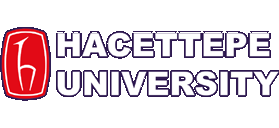ACADEMICS
Course Details
ELE743 - Advanced Computer Architecture
2025-2026 Fall term information
The course is not open this term
ELE743 - Advanced Computer Architecture
| Program | Theoretıcal hours | Practical hours | Local credit | ECTS credit |
| PhD | 3 | 0 | 3 | 10 |
| Obligation | : | Elective |
| Prerequisite courses | : | - |
| Concurrent courses | : | - |
| Delivery modes | : | Face-to-Face |
| Learning and teaching strategies | : | Lecture, Question and Answer, Problem Solving |
| Course objective | : | In this course, it is aimed to teach topics on advanced computer architecture which reflect the latest trends in this fields |
| Learning outcomes | : | A student completing the course successfully will learn most of the latest trends in advanced computer architecture Apply the techniques s/he learnt in the class to her/his thesis studies and also real-life applications, Have the adequate knowledge to follow and understand advanced up-to-date computer architecture concepts. |
| Course content | : | Introduction to Computer Architecture MIPS ISA and ALU Understanding Performance MIPS datapath MIPS Architecture Basics of Pipeline technique Solutions to hazard problem Reducing branch costs Memory hierarchy DRAM architectures Introduction to Cache Improving cache performance RAID architectures Buses and I/O interfaces Multiprocessor Introduction Multiple Issue Introduction Superscalar Pipeline |
| References | : | Patterson, Computer Organization and Design the Hardware Software Interface, 3rd edition, Elsevier.; Johnson M, Superscalar Microprocessor Design, Prentice Hall. |
| Weeks | Topics |
|---|---|
| 1 | Introduction to Computer Architecture |
| 2 | MIPS ISA and ALU - MIPS datapath - MIPS Architecture |
| 3 | Understanding Performance |
| 4 | Basics of Pipeline technique |
| 5 | Solutions to hazard problem |
| 6 | Reducing branch costs-Memory hierarchy |
| 7 | DRAM architectures |
| 8 | Midterm |
| 9 | Introduction to Cache - Improving cache performance |
| 10 | RAID architectures |
| 11 | Buses and I/O interfaces |
| 12 | Multiprocessor Introduction |
| 13 | Multiple Issue Introduction |
| 14 | Superscalar Pipeline |
| 15 | Final exam |
| 16 | Final exam |
| Course activities | Number | Percentage |
|---|---|---|
| Attendance | 0 | 0 |
| Laboratory | 0 | 0 |
| Application | 0 | 0 |
| Field activities | 0 | 0 |
| Specific practical training | 0 | 0 |
| Assignments | 14 | 30 |
| Presentation | 0 | 0 |
| Project | 0 | 0 |
| Seminar | 0 | 0 |
| Quiz | 0 | 0 |
| Midterms | 1 | 30 |
| Final exam | 1 | 40 |
| Total | 100 | |
| Percentage of semester activities contributing grade success | 60 | |
| Percentage of final exam contributing grade success | 40 | |
| Total | 100 | |
| Course activities | Number | Duration (hours) | Total workload |
|---|---|---|---|
| Course Duration | 14 | 3 | 42 |
| Laboratory | 0 | 0 | 0 |
| Application | 0 | 0 | 0 |
| Specific practical training | 0 | 0 | 0 |
| Field activities | 0 | 0 | 0 |
| Study Hours Out of Class (Preliminary work, reinforcement, etc.) | 14 | 10 | 140 |
| Presentation / Seminar Preparation | 0 | 0 | 0 |
| Project | 0 | 0 | 0 |
| Homework assignment | 14 | 3 | 42 |
| Quiz | 0 | 0 | 0 |
| Midterms (Study duration) | 1 | 38 | 38 |
| Final Exam (Study duration) | 1 | 38 | 38 |
| Total workload | 44 | 92 | 300 |
| Key learning outcomes | Contribution level | |||||
|---|---|---|---|---|---|---|
| 1 | 2 | 3 | 4 | 5 | ||
| 1. | Has highest level of knowledge in certain areas of Electrical and Electronics Engineering. | |||||
| 2. | Has knowledge, skills and and competence to develop novel approaches in science and technology. | |||||
| 3. | Follows the scientific literature, and the developments in his/her field, critically analyze, synthesize, interpret and apply them effectively in his/her research. | |||||
| 4. | Can independently carry out all stages of a novel research project. | |||||
| 5. | Designs, plans and manages novel research projects; can lead multidisiplinary projects. | |||||
| 6. | Contributes to the science and technology literature. | |||||
| 7. | Can present his/her ideas and works in written and oral forms effectively; in Turkish or English. | |||||
| 8. | Is aware of his/her social responsibilities, evaluates scientific and technological developments with impartiality and ethical responsibility and disseminates them. | |||||
1: Lowest, 2: Low, 3: Average, 4: High, 5: Highest
